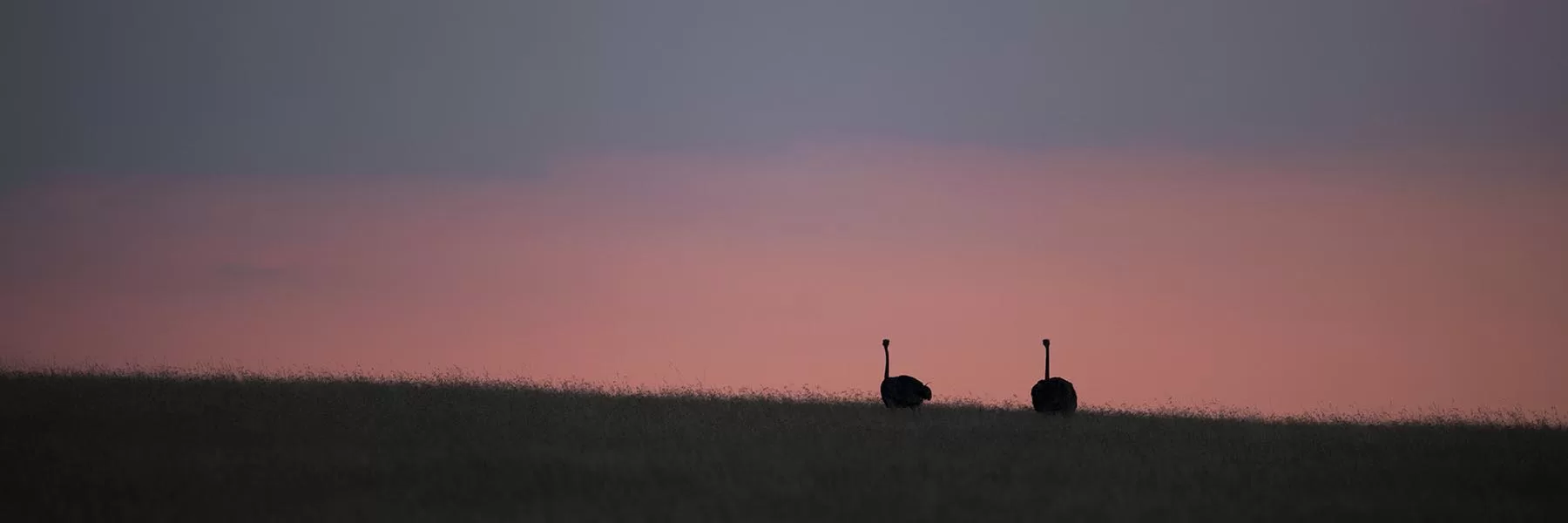The African safari had been on our wish list for quite some time before we finally decided to make it happen in November 2019. Thanks to Wild Voyager, we did not have to take much effort in making the bookings. We were all packed and ready to go. Having heard so much about the African wildlife we had even rented out some fancy gear to get decent photographs. When anyone visits Kenya or for that matter any Indian forest also if I may add, the prime attraction for most of the folks remains the apex predator. In most cases a wildlife safari is said to be a success if you do spot a lion or a cheetah or in case of India, a Royal Bengal Tiger. In Kenya as we know the big 5 – lion, leopard, elephant, buffalo and rhinoceros remain the primary attraction and if you spend a couple of days in Kenya you are likely to spot most of them. Undoubtedly each of these species is a stunner. But there is so much more to a forest beyond these larger mammals that most people miss out on. Here I am particularly talking about the feathered beauties.
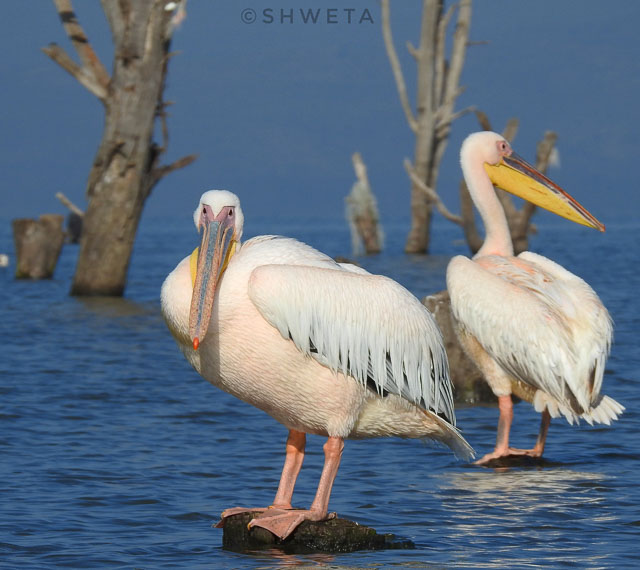
pelicans
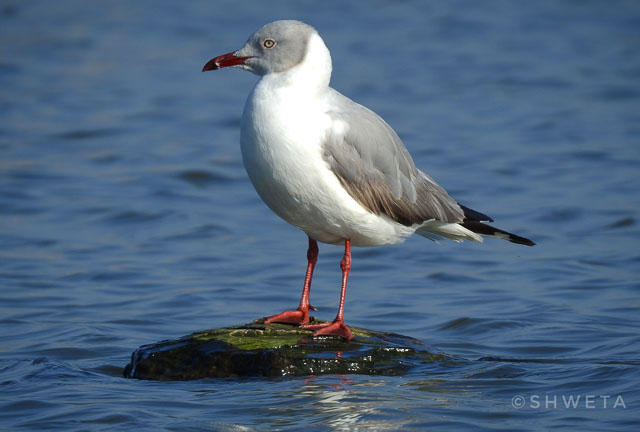
Africa is gifted with a large and diverse bird or in technical terms avifauna population. We as most people do, had a wonderful experience with the big 5 of Africa but for a change I would like to share our birding experience. We did happen to see many similar species like we do in India but the finer and subtle differences also added such a change in flavour. As per our itinerary we first visited the Amboseli National Reserve primarily known for its abundant elephant population and the magnificent Mt Kilimanjaro view. However for me, personally, it was so much more! We were gifted with an amazing birding experience as well in the start of our tour itself. On our first game drive we were able to see Kori bustards, lappet faced vultures and Ostriches among the larger birds. For me, this was my first encounter with the Ostrich and I was completely in awe! It was almost the height of our vehicle and to imagine that this bird can run up to 60kms an hour was amazing. We were able to spot several pairs throughout the safaris, each sighting as exciting as the first! There was a large wetland area in the center of the park where we were able to spot African Jacanas, Hammercop birds, a pair of beautiful grey crowned cranes, yellow billed storks, pied avocets, blacksmith plovers, greater flamingos, pelicans, fish eagles, several duck species and fowls. This was also our first encounter with the mighty hippo! Overlooking the lake, on a tall snag was perched a huge tawny eagle. The shrill call of the eagle echoed through the plains.
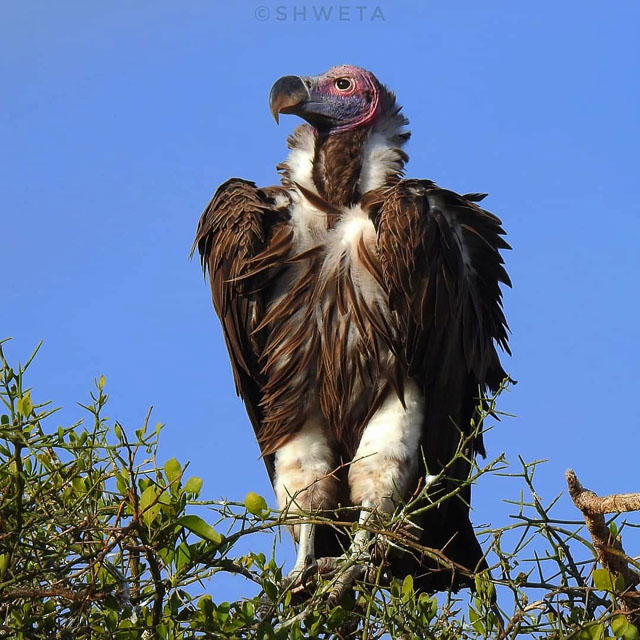
lappet faced vulture
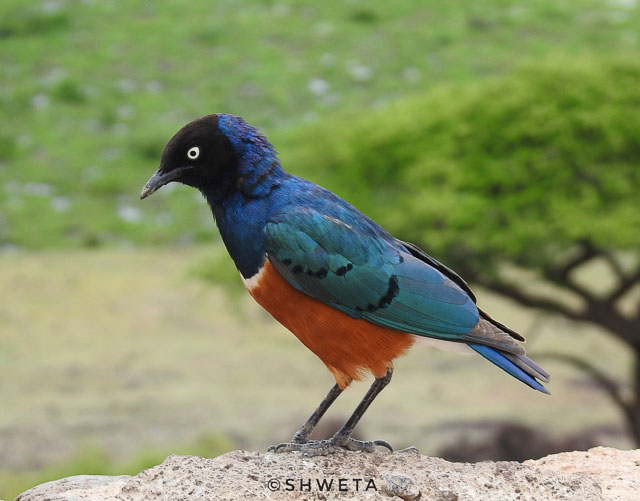
superb starling
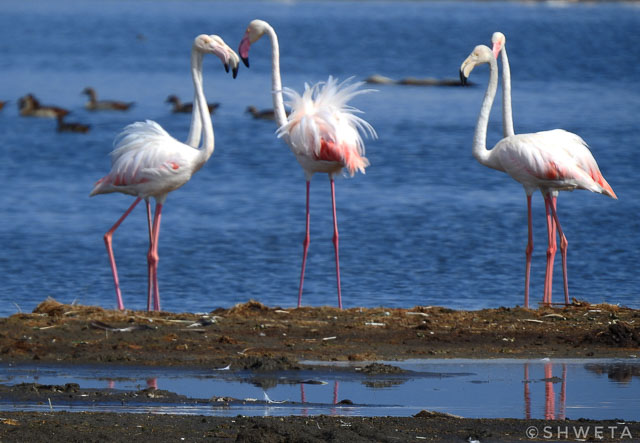
flamingos
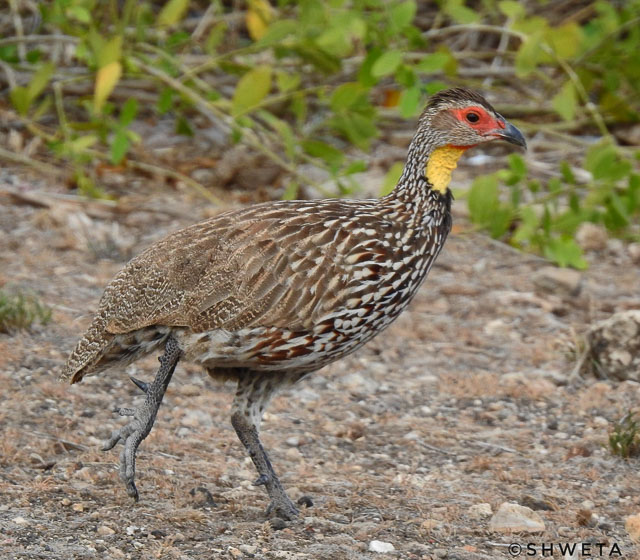
I happen to love watching raptors and this eagle was perched in the typical raptor pose looking so elegant. Another beautiful bird we saw for the first time was the superb starling, the African counterpart to the myna/ starling family in India. Given the dark and earthy colors of the starling family in India, it was refreshing to see the colors on this bird. The body was a brilliant blue with bright orange under parts and shiny eyes. A commoner but also a stunner, no wonder the name Superb! On the day we checked out of Amboseli, at the gate of our resort we spotted a pair of Marabou storks which were similar to the Adjutant storks we see in India. Continents that are so much apart have both stark diversity and similarity in their wildlife. Along with the enriching birding experience Amboseli also gave us our first Cheetah, giraffe and zebra sightings. In all, we were happy and satisfied campers moving on to our next destination- Lake Nakuru. The terrain at Nakuru was strikingly different from Amboseli. The forest had thicker cover as opposed to open plains. We were lucky to spot a huge herd of White Rhino and Buffalos grazing by the lake.
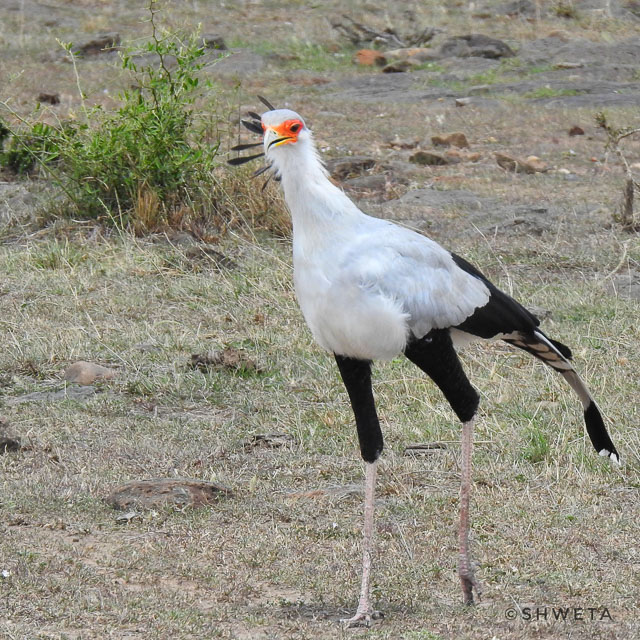
secretary bird
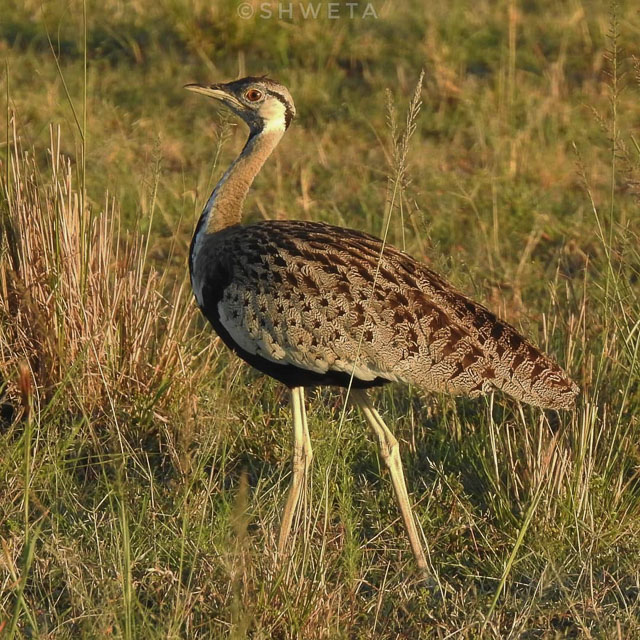
black bellied bustard
Lake Nakuru, located in the midst of the city also boasts of a healthy flamingo and pelican population along with several other aquatic birds. The lake was surrounded by tall trees giving the African Fishing Eagle a perfect vantage point to spot its prey. Lake Nakuru surprised us with our first lioness sighting as well. So far we had seen the big4. Among the other birds that we were able to spot at the reserve were hawk cuckoos, green hoopoe, black shouldered kite, glossy starlings, sooty chats, cormorants, darters and yellow billed storks. With a growing list of sightings we moved on to our next spot- Lake Naivasha. We took a boat ride and were able to see huge flocks of great white and pink backed pelicans. The anatomical pouch that this species has below the beak to catch fish has always remained a matter of attraction for me. They looked like a white carpet and we were able to get pretty close to them. Along the crescent island in the middle of the lake we could also see some hadada ibis, glossy ibis, blacksmith plovers and sea gulls. As we waited a while to get some close up shots, an African fish eagle swooped down right in front of us and grabbed a fish. It is amazing how these raptors can locate their prey from such enormous heights and yet it takes them a fraction of a second to get their tight grasp on it. Before we knew it, theke eagle had already perched and was feasting. Another beautiful catch from our ride was the Great Kingfisher apparently not a commonly sighted bird. Towards the edge of the lake there were large groups of Marabou storks, yellow billed storks and mixed flocks of ducks. In all we enjoyed our time at the lake and proceeded to our final stop- Masai Mara.
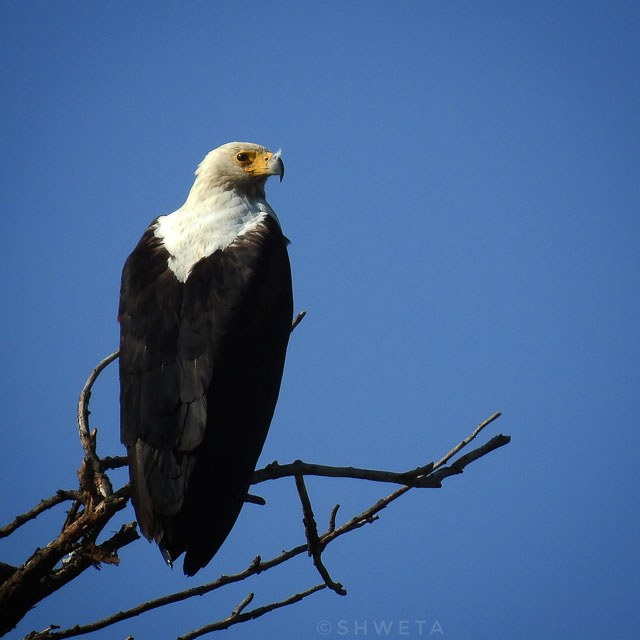
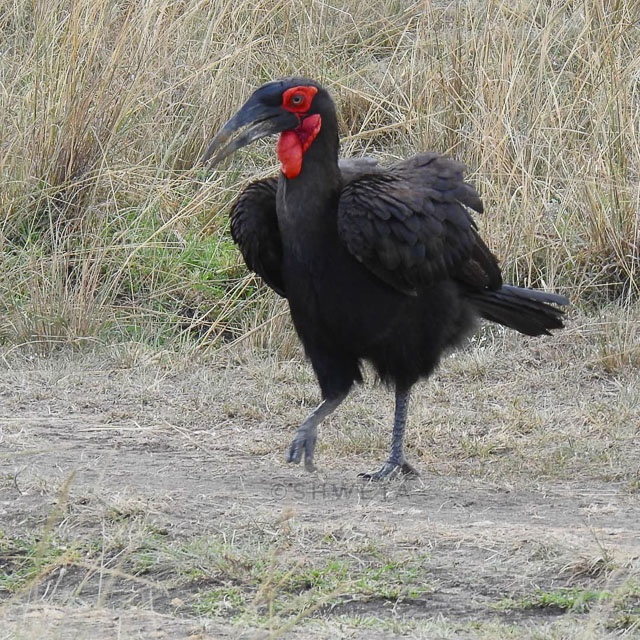
southern ground hornbill
I will always vividly remember the first bird we spotted in the Mara, the red checked cordon bleu. A tiny bird, probably the size of a sparrow or finch but the combination of colors on this bird blew my mind! It was like a painting. There was a perfectly circular tiny spot of red on a blue face. It was challenging to get a picture since it was moving so swiftly through the grass but to it was incredible to even get a glimpse of this cutie. Needless to mention, our experience with the big 5 was super thrilling in the Mara along with our exciting leopard encounter, but as it usually is, I will continue rambling about the birds Mara offered! In the afternoon during one of our game drives we were able to spot 2 secretary birds. They look like they are wearing a suit and tie and they walk about as if typing. Our guide joked about them being like clerks in a law firm. They seemed oblivious to our presence and we could get quite close. Apart from the black and white formal attire, they had a bright orange patch around the eye and a beautiful crest. Again, one of my favorites from the trip! We were also able to spot 2 other bustard species, white bellied and black bellied bustards, each one beautiful in its own way. Another bird which stood out from the rest was the southern ground hornbill, a rather large hornbill species. They are huge birds with a completely black body but bright red beaks and eye parts. They looked oddly very attractive and nothing like we had ever seen. Sunsets in the Mara are to die for and they just get better with silhouettes of solitary acacia trees, giraffes, and wildebeest and in our case a pair of vultures perched on a tree. The transformation of the sky as the sun sets is extraordinary.
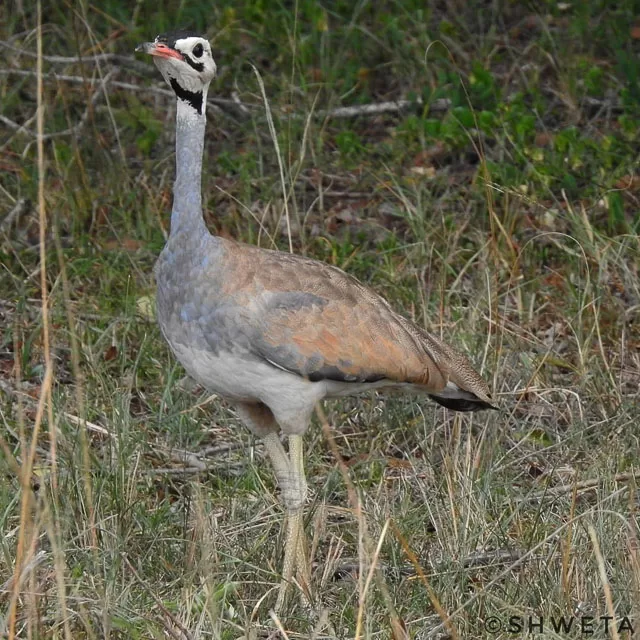
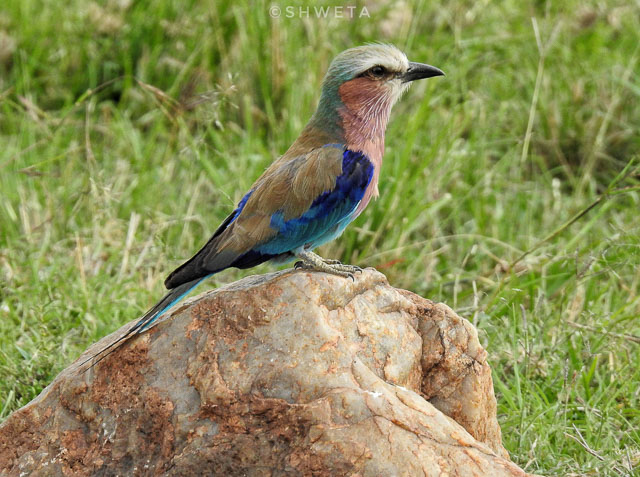
lilac breasted roller
Since our campsite was located in the interior of the reserve we could hear numerous calls one of which was the southern boubou. We happened to hear the peculiar call several times although we couldn’t spot the bird. Some of the other beauties that we sighted over our safaris were sandgrouse, Temmink’s courser, Senegal plover, grey headed kingfisher, African Grey Hornbill, Ruppell’s griffon vulture, Eastern and Northern Chanting Goshawks, Ruppells starling and the stunning lilac breasted roller, a variant of the Indian Roller. Throughout our entire game drive experience, we were very fortunate to constantly witness some kind of activity in the wild with mammals as well as birds. Our bird count was over 100 throughout the trip and this was possible since our guide was an avid birder himself. I cannot emphasise enough that you must not enter the wilderness with any expectations or preconceived notions. Probability of sightings on a safari is sheer luck when you have to be in the right spot at the right time. However, when you go in with an open mind and without a checklist of the species that you must see, the surprises are more enjoyable and worthwhile and you are rarely disappointed. The forest has a lot to offer, you must just have the eyes for it! Every living thing in there is precious.
—————————————————————-
The above experience is as shared and written by our guest Ms. Shweta Yogi who undertook a long Kenyan safari with us spanning Masai Mara, Lake Nakuru and Amboseli
If you loved reading this story, then subscribe to our blog here (it will ask to verify your email) to get inspiring travel stories and trivia delivered to your email. Stories about wildlife trivia, cultural experiences, curated luxury hotel lists, underrated places to travel, polar journeys and much more.


